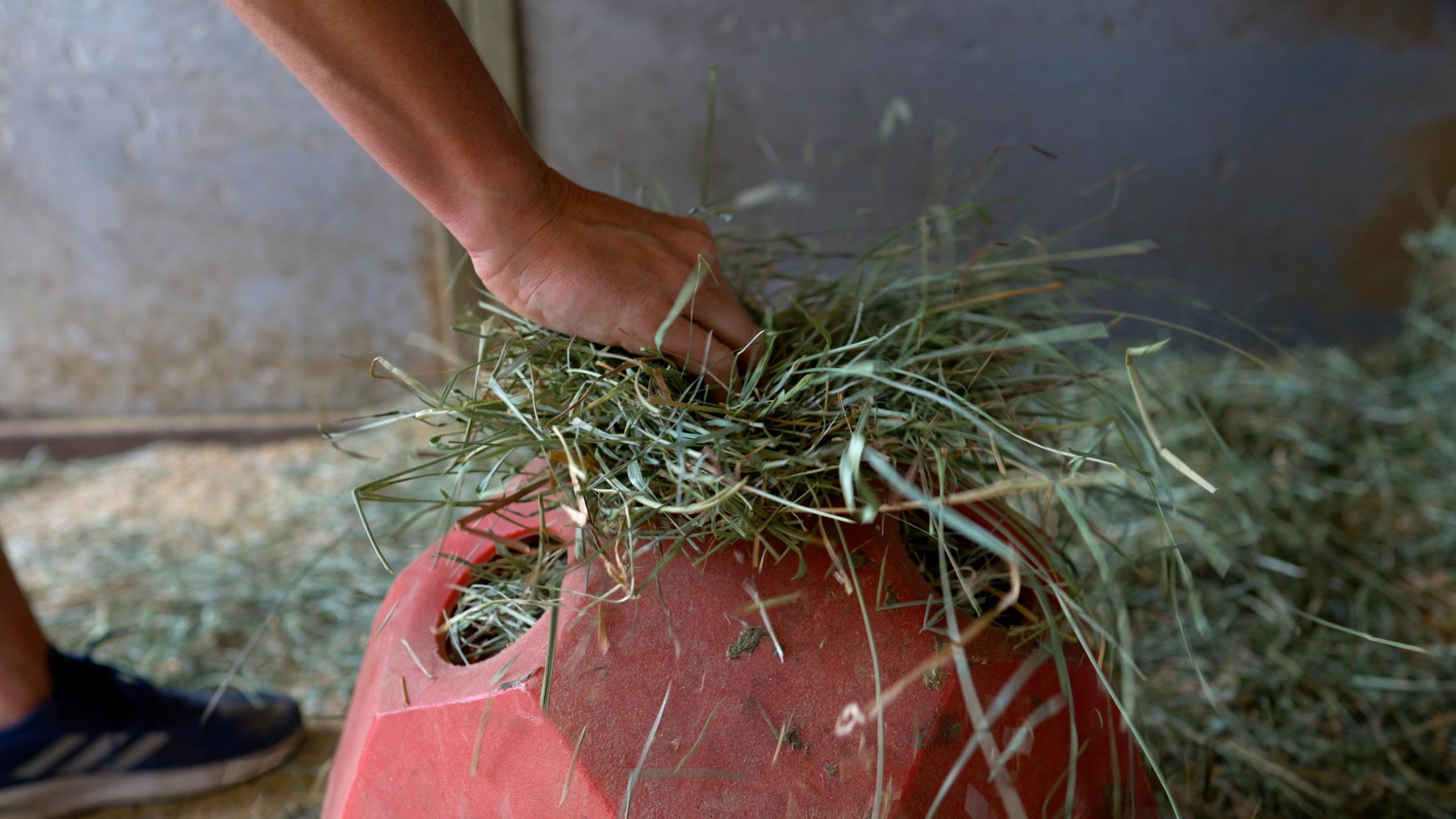
Animal Science, Equestrian Team Research Could Lead to Happier, Healthier Horses
Researchers documented horse behavior and vitals during enrichment trials
A unique research collaboration involving animal science students, the UC Davis Intercollegiate Equestrian Team and more than 700 hours of video could help enrich the lives of stabled horses.
The subjects had names like Rogue, Sparky, Bella and Fargo and the research involved tools such as a Beethoven symphony, shatter-proof mirrors, slow feeding forage balls and giant rubber jolly balls.
Horses have long been domesticated, and life in stalls can be boring compared to life in the wild. Miranda Brauns, a master’s student studying animal biology, sought to understand if giving horses tools to pass the time might lead to mental and physical stimulation that improves their physiological, psychological, and behavioral state.
“It’s our responsibility to provide them good care and welfare and enrichment is a tool you can use,” Brauns said. “We’re interested in really understanding the effect of enrichment from an animal welfare viewpoint.”
A different research venue
Rather than working with animals at the Department of Animal Science’s horse barn or at the School of Veterinary Medicine, Brauns turned to the UC Davis Equestrian Center, a 25-acre facility that offers riding lessons and boarding opportunities for students.
That location meant that the equestrian team, which was formed in 2018-19 and competes against universities from across the country, could also take part in research.
The different venue “offered an opportunity to work with equestrian team horses that are typically not part of research,” said Amy McLean, an animal science assistant professor of teaching who is Brauns’ thesis advisor. “It was great to be working there with the team horses.”
Researchers set up video cameras in stalls housing both American Quarter and American Paint horses. Team members and additional volunteers presented mirrors, hay feeders, rubber balls and music to nine horses for an hour four times a day over four weeks.
Beethoven’s Symphony No. 9, which has been utilized in other equine research, was played during the final week. “It appeared that they were more relaxed on those days,” equine science major Liat Bachar said. “They were less nippy toward each other. It was exciting. It was funny.”
The ball was also popular. “We had some horses pick it up with their teeth and kind of bop it with their head,” she said.


In addition to capturing video, the horses were fitted with smart halters that measured heart and respiratory rates. That physiological data can give indications of excitability toward an item.
“We wanted the outcome of the study to really be applicable to the industry,” said Brauns of her thesis research and the items offered to the horses. “We will pair the heart and respiratory rates with the behavioral data. If enrichment elevates heart rate too much it could be an indicator it’s stressing them out.”
New to research
The research was a new opportunity for some of the student-athletes, like Amber Ide, an equestrian team member and animal science major who wants to go to veterinary school. The research offered a chance to combine her worlds.
“Getting to see them reacting based on already knowing their personalities was interesting” said Ide, who now suggests bringing out the ball or hay ball feeder to team horses. “It’s something we’ve tried to incorporate with the ones that liked it.”
Brauns and some assistants are now combing through 720 hours of data, scoring certain behaviors and looking for patterns. The findings should lead to better understanding of how enrichment affects horse welfare, a topic that hasn’t been at the “forefront of horse research,” she said.
The equestrian team horses “represent a lot of horses that spend time in a confined space” so the results could be applicable to more than sport animals,” said McLean, who hopes to do similar research with donkeys later this year.

A low-cost intervention
Horse managers could easily start using balls, music and other items in their operations without having to spend a lot of money or buy costly technology.
“This is one of those really cool research projects in that it’s not just applicable to the elite,” Bachar said. “The concept is both basic and sophisticated. It could definitely change the way horses are managed.”
Working with the equestrian team represented a welcome collaboration between sports and research, and it is one that is encouraged, said Anissa Nachman, the sport administrator for the equestrian team.


Media Resources
- Amy McLean, Department of Animal Science, acmclean@ucdavis.edu
- Emily C. Dooley, College of Agricultural and Environmental Sciences, ecdooley@ucdavis.edu, (530) 650-6807